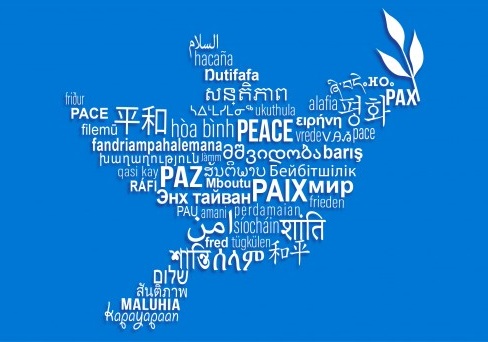In a world increasingly globalized, multilingualism is becoming the norm rather than the exception. Supported by mother tongue-based multilingual education, linguistic diversity brings a number of benefits to learners but also to society as a whole. Growing evidence suggests that multilingualism can effectively contribute to sustainable development and to peace, argues David Atchoarena

Since the year 2000, the world has been celebrating International Mother Language Day on 21 February. Linguistic diversity is an invaluable part of the heritage of humanity. About 7,000 languages are spoken around the world. Yet, 2,680 of them are in danger of disappearing, and many more are already gone.
In that context, offering education and learning opportunities in the mother tongue is essential to transmitting and preserving traditional knowledge and culture in a sustainable way. Children, youth and adults require learning opportunities that are relevant to their lives and needs. This also includes having access to an education in their own language. Evidence shows that such provision contributes to improving learning and developing confidence and self-esteem.
Yet a study shows that, in 2012, an estimated 40 per cent of the world population did not have access to an education in a language they spoke or understood. Monolingual education models have often contributed to reducing linguistic diversity and the use of local languages. While this is still the case today, over the years progress has been made and many countries now offer education in diverse languages, notably in early schooling, and also in adult education and learning, including in literacy programmes.
The latest information revealed in the UNESCO Global Report on Adult Learning and Education (GRALE 4), released by the UNESCO Institute for Lifelong Learning (UIL) in December 2019, provides a number of examples of national policies promoting multilingualism in and through adult education and literacy programmes.
Algeria, for instance, promotes multilingualism through literacy and adult education in both national and official languages. Eritrea reported efforts to promote basic education and skills training for adults using the learners’ mother tongue in literacy implementation.
In Mexico, the adult education policy focuses on literacy for the Spanish-speaking population and bilingual literacy for indigenous communities. A comprehensive monitoring strategy involved the development of 252 evaluation instruments available in several indigenous languages for different groups of learners (Maya, Mazateco Alta, Náhuatl de la Huasteca, Náhuatl Sierra Negra and Zongólica, Tseltal and Tsotsil). In parallel, additional tools were designed to assess the reading comprehension and written expression in Spanish and in the indigenous language of bilingual advisors in 8 states (Chiapas, Hidalgo, Oaxaca, Puebla, Quintana Roo, San Luis Potosí, Veracruz and Yucatán).
In Mozambique, the new Literacy and Adult Education Strategy introduces a comprehensive curriculum for youth and adult basic education and makes provision for programmes in six Mozambican languages, including Ronga, Changana, Sena, Ndau, Makua and Nyanja.
These examples illustrate the efforts made by a number of countries to promote the use of a diversity of languages, including indigenous ones, to expand access to adult education and literacy programmes, enhance the quality of learning and promote multilingualism. But what do we mean exactly when using the term multilingualism? What reality does it describe?
In fact, linguistic diversity is a dominant cultural feature in many parts of the world where several languages are used within the same communities or by different groups within the same country. In such contexts, multilingualism describes the use of more than one language in everyday life. A research study cited by SIL found that in Northern Pakistan, in some communities speaking the same language varieties, people reported that they spoke different languages. In other communities, where the languages being used were considered as being different, the people insisted that they were the same. Such findings show that the concept of multilingualism is complex and very much related to issues of identities, cultures and knowledge systems.
Recognizing both the importance of multilingualism and its complexity, UNESCO is promoting Mother Tongue-Based Multilingual Education (MTB-MLE); it is an education that begins in the language that the learner speaks most fluently, and then gradually introduces other languages. This approach is key towards achieving equitable quality education and lifelong learning for all, as stipulated in the fourth United Nations Sustainable Development Goal (SDG 4).
Recent neuro-scientific findings suggest that speaking several languages develops the brain. Hence, being actively multilingual actually changes a person’s brain structure in a way that improves memory, helps process information, and develops multitasking skills. In addition, speaking multiple languages could actually delay the effects of certain brain diseases causing a decrease in the ability to think and remember.
Besides its effects on academic performance and on learning, multilingualism is also often considered as a factor of peace. The experience of the European Union in promoting linguistic diversity and multilingualism, including through sophisticated and well-funded European education exchange programmes such as ERASMUS, probably provides the most advanced form of such a policy. Regional initiatives to build peace through education and multilingualism are also present in other parts of the world, notably in Africa, where cross-border African languages are being promoted.
Recognizing this trend, UNESCO has declared ‘Languages without borders’ as the theme for International Mother Language Day 2020. We at the organization firmly believe in the importance of cultural and linguistic diversity for sustainable development and peace. Last year UNESCO celebrated indigenous languages as a vehicle for peace-building and reconciliation on International Mother Language Day.
Multilingualism constitutes a powerful instrument to foster tolerance and respect for others; it creates an opening for dialogue. As François Cheng wrote in his 2002 book, Le Dialogue, ‘fate made that from a certain time in my life, I became the bearer of two languages, Chinese and French … It is not surprising that since then, in the heart of my linguistic adventure, which is directed towards the love for an adopted language, one theme has had pride of place: dialogue’ (quoted in ‘Languages matter’, the UNESCO Courier, Vol. 1, 2008, p. 10).
In an increasingly complex and multicultural world, marked by globalization and one of its most visible expression, international migration, dialogue is essential for finding peaceful and sustainable solutions. Hence, policies and practices recognizing and making use of linguistic diversity are key to assuring people in their own sense of identity while being able to understand and respect other cultures. By opening the dialogue between languages, multilingualism can establish a dialogue between people and be a promise of peace and a sustainable future.
David Atchoarena is Director of the UNESCO Institute for Lifelong Learning
